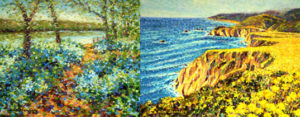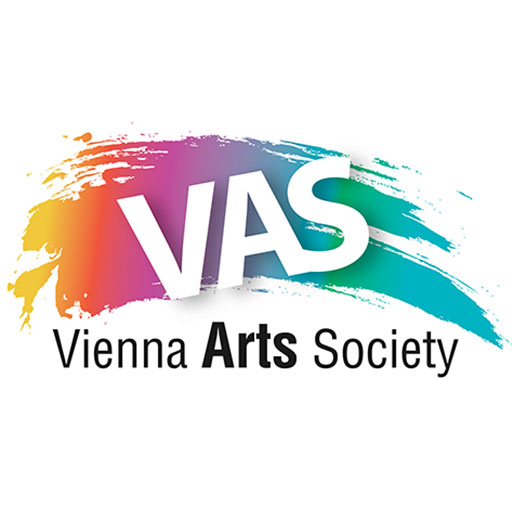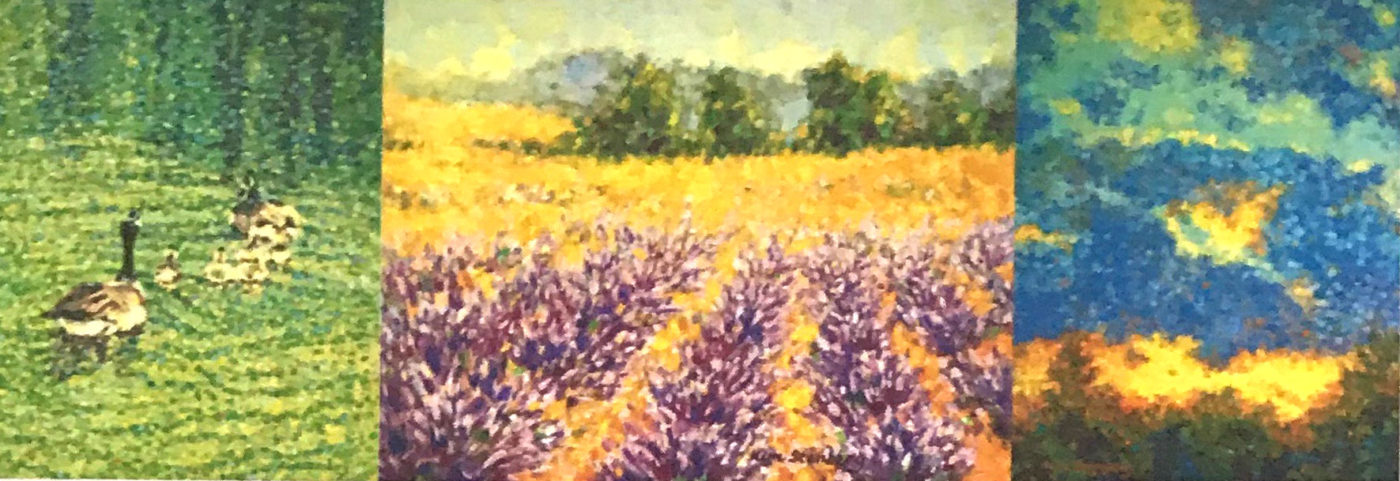Friday, January 10, 2020 Time: 10 am to 4 pm
@ Vienna Art Society 243 Church St. Suite 100 Lower Level, Vienna, Va
Cost: VAS Member: $85; Nonmember: $95
TO RESERVE YOUR SPOT:
Option 1: Mail your check made out to Vienna Arts Society with “Oil/Pointillist” written in the memo line; include a note with your name and contact info to Vienna Art Society Art Center 243 Church Street NW, Suite 100 LL, Vienna, VA 22180. OR
Option 2, if you want to pay by credit card please call the Art Center: 703 319-3971.
Payment is due to reserve your spot. *(Cancellation Policy: A refund of 90% if cancel by Dec 10,2019; thereafter 90% refund available ONLY if there is another artist to take your space).
 Let’s walk in the footsteps of Georges Seurat by throwing dots around! As you may be familiar with the famous post-impressionist technique initiated by the methodical Seurat, pointillism takes advantage of the optical mixing of colors, placed side by side, not on top of each other. Dots and dashes make no sense until you walk a few feet or yards backwards. The seemingly haphazard broken strokes arrange themselves into shapes and designs in gloriously luminous colors, unsullied by overmixing. In this workshop, I will demonstrate how to create a “new Pointillist” composition and also how to rescue a “failed painting” with the Pointillist technique. For the workshop, you have the choice of either working on an existing painting or on a new one. The size of the painting is up to you but no larger than 16 x 20.
Let’s walk in the footsteps of Georges Seurat by throwing dots around! As you may be familiar with the famous post-impressionist technique initiated by the methodical Seurat, pointillism takes advantage of the optical mixing of colors, placed side by side, not on top of each other. Dots and dashes make no sense until you walk a few feet or yards backwards. The seemingly haphazard broken strokes arrange themselves into shapes and designs in gloriously luminous colors, unsullied by overmixing. In this workshop, I will demonstrate how to create a “new Pointillist” composition and also how to rescue a “failed painting” with the Pointillist technique. For the workshop, you have the choice of either working on an existing painting or on a new one. The size of the painting is up to you but no larger than 16 x 20.
I have been experimenting with pointillism since 1995. Two decades later, I now work both in oil and watercolor. After having worked in the impressionist style of Sara Linda Poly, I have begun to gravitate toward pointillism when painting landscapes. “Bluebell Heaven” and “Big Sur Blue” (below), both in oil, date from 2014. I must say pointillism is my thing!
So that’s what we are going to do. If you are participating in the oil portion of the workshop on Friday, bring a painting already blocked in. It may be dry or wet. It doesn’t matter. If totally dry, you can always apply a layer of glazing medium at the outset of the painting session. Nothing too detailed; designs with big shapes work better.
In the class you will add dots. How? One by one. How do you decide which colors? I used to say, intuitively. If I must explain it analytically, I’ll say first start with analogous colors to the area, then become bolder with complementary colors. What if your chosen colors don’t work? Paint over with new dots. It could be hue, temperature, intensity, or value that is off. By the end of the day, your color sense will have become significantly enhanced.
Kim’s Bio
Kim was born in Seoul, Korea in 1959. She came to the United States to study history and received a PhD degree in British history at the University of Minnesota in 1993. Soon after she earned the final degree, she decided to take art classes at the Art League School in Alexandria, VA and it turned out to be a life-changing decision. She has been using both sides of her brain ever since.
Kim started out with the medium of colored pencil, then moved on to watercolor. Her first entry in a juried show at The Art League won the Best in Show award in 1996. Many other honors followed. She currently works in oil, watercolor, and gouache as well as mixed media.
Recently Kim started teaching art at The Art League School in Alexandria, VA. When teaching, Kim is in her element. She has been at it since in college, teaching English, history, and now art. She believes that drawing and painting are skills anyone can learn. With passion and patience, Kim wishes to aid the unleashing of a student’s innate creativity.
Supply List for Kim Stenberg’s Oil Pointillist Workshop
I am assuming that you are all experienced oil painters and have your own favorite supplies. Please bring them to the workshop. The following is just for reference. By the way, I use water-soluble oil paints (Winsor Newton and Holbein) with occasional traditional paints. The only thing you may or may not use in your work is small round or filbert brushes that are necessary to add dots to the painting. If you choose to work on a large painting (no bigger than 16 x 20”, due to the time constraint), just make dots bigger! Landscapes with simple shapes usually work better with the technique.
Oil Paints: Paints with * are traditional paints.
- Yellows: Naples Yellow Lt (Holbein), Cadmium Yellow Lemon (Holbein), Cadmium Yellow, Indian Yellow, Cadmium Yellow Deep Hue (Winsor Newton, it’s transparent)
- Orange: Cadmium Orange
- Reds: Brilliant Pink (Holbein), Rose Madder, Alizarin Crimson, Cadmium Scarlet* (Winsor Newton)
- Purples: Rose Violet, Quinacridone Violet, Dioxazine Violet
- Blues: Ultramarine, Cobalt Blue, Cerulean Blue, Turquoise Blue, Ice Blue* (Richeson)
- Greens: Ice Green (Holbein), Sap Green, Cadmium Green Pale* (Winsor Newton), Cadmium Green* (Williamsburg), Viridian, Terre Verte*
- Browns: Raw Sienna, Terra Rosa (Holbein), Imidazolone Brown (Holbein, it’s transparent), Burnt Umber
- Darks: Indigo, Ivory Black
- Brushes: I use an assortment of flats, brights, filberts, and round brushes by Silver Bristlon.
- Palette of your choice
- Canvas: I use either Claessens oil-primed linen mounted on Baltic birch or Masonite panels or Fredrix Belgian linen canvas.
Miscelleneous:
- Glazing medium (Winsor Newton)
- Thinner and painting medium (both by Winsor Newton): I mix them (3:1) to ease the flow of paints when toning canvas.
- Jar for water. AND Rags or paper towels

